Pipe clamp: types, options, mounting details
What are pipe clamps for? What are they made of? What can a metal or plastic pipe clamp look like? How to use these products? Let's try to answer these questions.
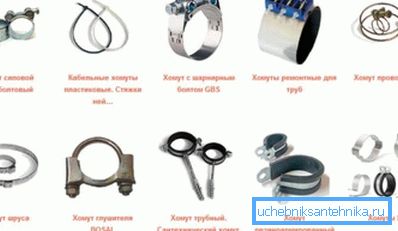
Purpose of use
There are actually not many of them:
- Installation of the pipeline to the wall, light partition, ceiling or supporting structures of any type. As a rule, we are talking about gas, water and sewer pipes of circular cross section.
- Electric grounding of cast iron or steel bath. In this case, the grounding clamp for pipes is a simple loop of thin galvanized; it is crimped on a cold water pipe and connected with a thin steel bar or copper wire from the bathroom itself.

- Clamps for profile pipes are used to connect them when assembling a variety of racks, racks and other metal structures. This type of connection with moderate mechanical loads perfectly replaces welding.
- Repair clamps are used to seal the leakage of water pipes.. However, in most cases, the repair clamp can be used as a coupling: the main thing is that its length be greater than the diameter of the pipe.
Important: with a diameter of more than 350 mm, the clamp must exceed the cross-section of the pipes to be joined by at least 150 mm.
- Finally, crimping (tightening) products are designed to crimp the hoses for various purposes on the fittings. As a rule, the clamp of this type is a perforated strip with a screw.
Applicable materials and designs
Below we consider what these products are made of, and what they are.
Mounting
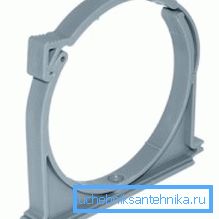
The main material used in the manufacture of fasteners for sewage - unplasticized polyvinyl chloride. Galvanized or chrome steel can be used as an auxiliary material. On sale you can find two designs of fasteners.

For water and gas pipes of various types, fasteners designed in a slightly different manner are used.
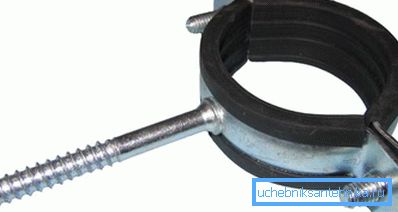
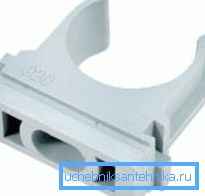
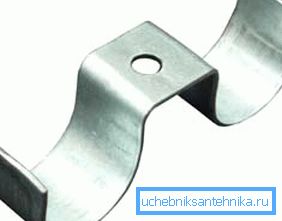

For proftruby
This type of product is quite the same: they are all detachable, designed to be bolted together. Material - stainless steel or galvanized.
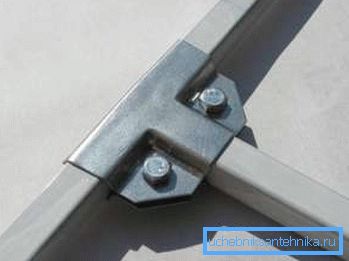
Intraspecific differences mainly come down to how many pipes, what section, and at what angle the fastener connects.

Repair
The main purpose of their application is to neutralize the flow before or instead of performing welding work. Since the size of the fistula in old water pipes is quite significant, the length of the product should allow hermetically isolate a fairly large portion of the water pipe.
By design, repair clamps can be divided into detachable, consisting of two connecting halves, and C-shaped.
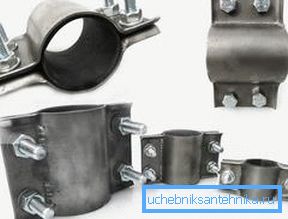

Materials used for the manufacture of:
- Black steel Along with the use of factory-made products, metalworkers practice making pipe clamps with their own hands. The instructions are ridiculously simple: you just need to hammer out a steel strip of 3 mm thickness on a template made of a pipe of the appropriate size and drill one or two pairs of holes.
- Galvanized steel. It compares favorably with the fact that it is not afraid of rust when in contact with water.
- Stainless steel. Its price is much higher than that of galvanized, but this material will not become covered with rust even if the outer protective layer is disturbed.
- Cast iron. It is quite fragile, so the corresponding products are made quite massive.
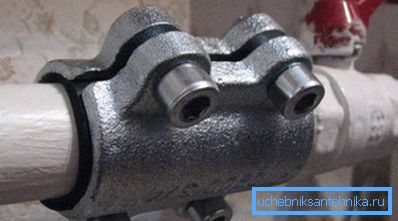
Dense rubber is commonly used to seal pipes.
However: on high-temperature pipelines (in particular, the supply of heating at the input to the house and industrial steam lines), paronite (hard heat-resistant rubber) and heat-resistant silicone are used.
Crimp
The material used is galvanized or aluminum. Due to the engagement between the screw thread and the perforation of the tape, as the screw rotates, the clamp is tightened.
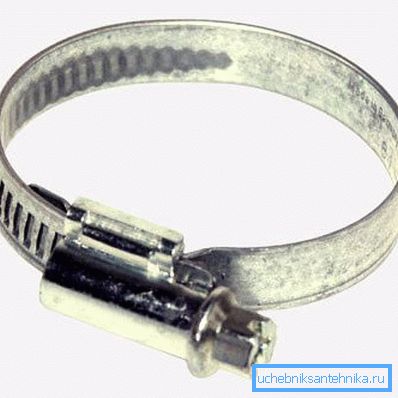
Useful tips
It would seem that applying such constructively simple adaptations should be easy.
But here there are subtleties:
- Suspensions or clamps for sewer pipes made of polyvinyl chloride or polypropylene, are mounted in increments not exceeding ten pipe diameters. That is, with a diameter of 50 mm pitch is half a meter, at 110 mm - 1.1 meter, and so on. If you increase the step, sewage for one or two years will inevitably sag. The resulting areas with counter-clones will become a place of constant blockages: there will accumulate fat, sand and other suspensions.
- The cast-iron sewage system is mounted on each bell and / or in increments of no more than 1.5 meters.
- The slope during the installation of sewage does not just have to be constant: it is again tied to the diameter.
| Nominal diameter, mm | Slope, cm / linear meter |
| 50 | 3.5 |
| 110 | 2 |
| 150 | one |
| 200 | 0.8 |
- With the help of a crimping clamp and gaskets for a crane, it is easy to eliminate a point fistula in the water supply system. The gasket is simply attracted to the rust-free spot. In the absence of a clamp, the gasket can be attracted by thick copper or annealed steel wire.
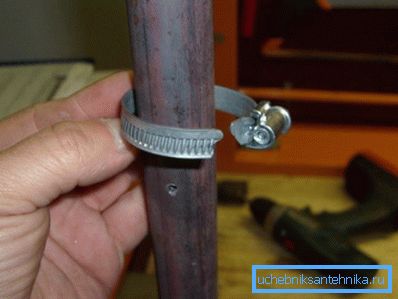
- Leaking the bell of the sewage pipe on a horizontal section or behind the toilet can be eliminated by wrapping it tightly with a band-rubber purchased at a pharmacy or cut along a bicycle chamber. Rubber is superimposed with coils shifting by half its width; the last turn is fixed by wire.
Conclusion
Of course, in a small material it is impossible to list all the solutions offered by the modern market. As usual, the reader will be able to study some amount of additional information by viewing the video in this article. Successes!